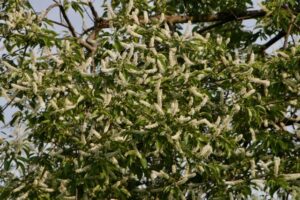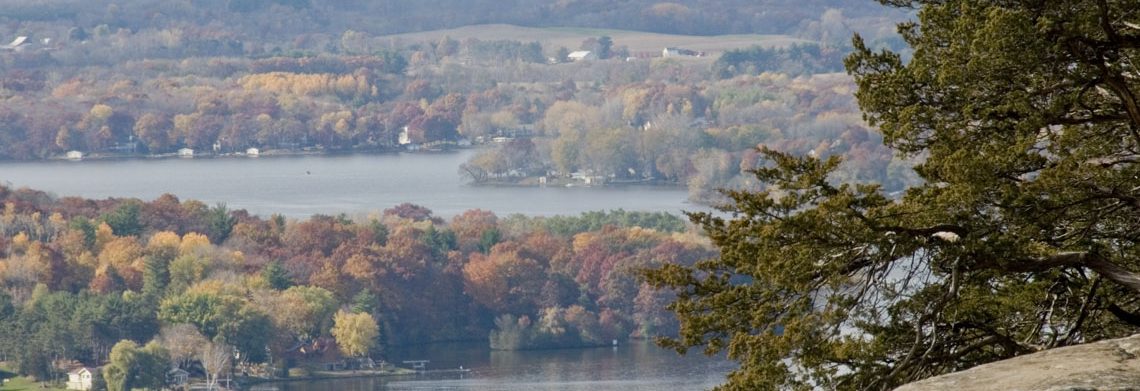black cherry
Prunus serotina

Description:
Prunus serotina, commonly known as black cherry, is a deciduous tree native to Wisconsin. It belongs to the Rosaceae family and is widely distributed across the eastern and central parts of the continent, ranging from Canada to Florida and as far west as Texas.
The black cherry tree typically reaches a height of 50 to 80 feet (15 to 24 meters) and has an upright, pyramidal or oval-shaped crown. Its bark is smooth and reddish-brown when young, gradually becoming darker and developing distinctive horizontal lenticels as the tree matures. The leaves are simple, alternate, and elliptical in shape, measuring 2 to 5 inches (5 to 13 centimeters) long. They have finely serrated margins and a glossy dark green color, turning yellow to red in the fall.
In spring, black cherry trees produce clusters of small, fragrant white flowers that attract pollinators such as bees and butterflies. These flowers give way to dark purple to black cherries that ripen in late summer. The fruit is approximately ¼ to ⅓ inch (0.6 to 0.8 centimeters) in diameter and is a food source for birds and mammals.
Overall, Prunus serotina is a resilient and adaptable tree that thrives in a variety of habitats, including woodlands, forests, and open fields. It plays an important ecological role, providing food and habitat for wildlife. The wood of black cherry trees is highly valued for its attractive grain and is commonly used in furniture making and woodworking.
Details:
wild black cherry
References:
- iNaturalist – Prunus serotina
- Lady Bird Johnson Wildflower Center – Prunus serotina
- NRCS Plant Guide – Prunus serotina
- USDA Plants Database – Prunus serotina
- WisFlora Database – Prunus serotina
Return to Native Plants page
